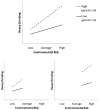Review: Environmental influences on alcohol use: Informing research on the joint effects of genes and the environment in diverse U.S. populations
- PMID: 28117924
- PMCID: PMC5695556
- DOI: 10.1111/ajad.12478
Review: Environmental influences on alcohol use: Informing research on the joint effects of genes and the environment in diverse U.S. populations
Abstract
Background and objectives: This review aimed to inform the current state of alcohol research on the joint effects of genes and the environment conducted in U.S. racial/ethnic minority populations, focusing on African Americans, Latinos/Hispanics, Asians, and American Indians.
Methods: A key-word and author-based search was conducted and supplemented with direct contact to researchers in this area to ensure a comprehensive inclusion of published, peer-reviewed studies. These studies were considered in terms of the racial/ethnic population groups, phenotypes, genetic variants, and environmental influences covered. Research findings from alcohol epidemiologic studies were highlighted to introduce some potential environmental variables for future studies of gene and environment (G-E) relationships.
Results: Twenty-six (N = 26) studies were reviewed. They predominantly involved African American and Asian samples and had a very limited focus on Latinos/Hispanics and American Indians. There was a wide range of alcohol-related phenotypes examined, and studies almost exclusively used a candidate gene approach. Environmental influences focused on the most proximate social network relationships with family and peers. There was far less examination of community- and societal-level environmental influences on drinking. Epidemiologic studies informing the selection of potential environmental factors at these higher order levels suggest inclusion of indicators of drinking norms, alcohol availability, socioeconomic disadvantage, and unfair treatment.
Conclusions: The review of current literature identified a critical gap in the study of environments: There is the need to study exposures at community and societal levels.
Scientific significance: These initial studies provide an important foundation for evolving the dialogue and generating other investigations of G-E relationships in diverse racial/ethnic groups. (Am J Addict 2017;26:446-460).
© 2017 American Academy of Addiction Psychiatry.
Conflict of interest statement
The authors report no conflicts of interest. The authors alone are responsible for the content and writing of this paper.
Figures
References
-
- Kendler KS, Eaves LJ. Models for the joint effect of genotype and environment on liability to psychiatric illness. Am J Psychiatry. 1986;143(3):279–289. - PubMed
Publication types
MeSH terms
Grants and funding
LinkOut - more resources
Full Text Sources
Other Literature Sources
Medical
Miscellaneous



